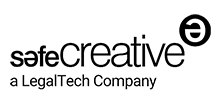Yàn (2016-2025) by Ou Jiun-You, Every Square is a Fiction of Order by Berenice Hernández & Mari Ulland and Heaps by Sebastian Rusten
Exhibition
/
03 Apr 2025
-
18 May 2025
Published: 01.04.2025
Necklace: Yàn #28, 2023
Inkstone, sterling silver, stainless steel, two-component adhesive
From series: Yàn
© By the author. Read Klimt02.net Copyright.

Three exhibitions will be on view at Format Oslo until May 18th 2025.
You're invited to the opening on Thursday, 3 April at 6 pm with a speech by the art critic, writer and teacher at KHiO, Line Ulekleiv.
-

Spotlighting Getting Started 2026
12Jan2026 - 18Feb2026
The Goldsmiths’ Centre
London, United Kingdom -

Metamorphosis in Flux: International Jewelry Art Exhibition
21Dec2025 - 27Dec2025
Gallery Maruhi
Tokyo, Japan -

House of Pearl
21Dec2025 - 03Mar2026
Thanks Space
Hangzhou, China -

WearHouse Christmas 2025
19Dec2025 - 20Dec2025
The WearHouse
Amsterdam, Netherlands -

La Botiga de les Joves Joieres 2025
17Dec2025 - 19Dec2025
EASD València
Valencia, Spain -

Els Comín: 60 anys fent Joies
11Dec2025 - 10Jan2026
66 Mistral Gallery
Barcelona, Spain -

White And Red Dots
11Dec2025 - 30Dec2025
Platina
Stockholm, Sweden -

Things, Desires… A Christmas Selection by Hannah Gallery
08Dec2025 - 07Jan2026
Hannah Gallery
Barcelona, Spain -

Plus One Collective
06Dec2025 - 19Dec2025
Le Arti Orafe
Florence, Italy -

Cash
06Dec2025 - 14Dec2025
Espace Borax
Vevey, Switzerland -

Transmutations by Nicolas Christol
06Dec2025 - 14Dec2025
Galerie L&C Tirelli
Vevey, Switzerland -

Altar The Present
05Dec2025 - 07Feb2026
Mendocino Art Center
Mendocino, United States -

Form and Light by Claire Kahn
05Dec2025 - 31Dec2025
Patina Gallery
Santa Fe, United States -

Alloy - Wearable Art
05Dec2025 - 26Jan2026
Kunst Centrum Haarlem
Haarlem, Netherlands -

Brooches Maketh Man
04Dec2025 - 18Dec2025
Siat Gallery
Seoul, South Korea













